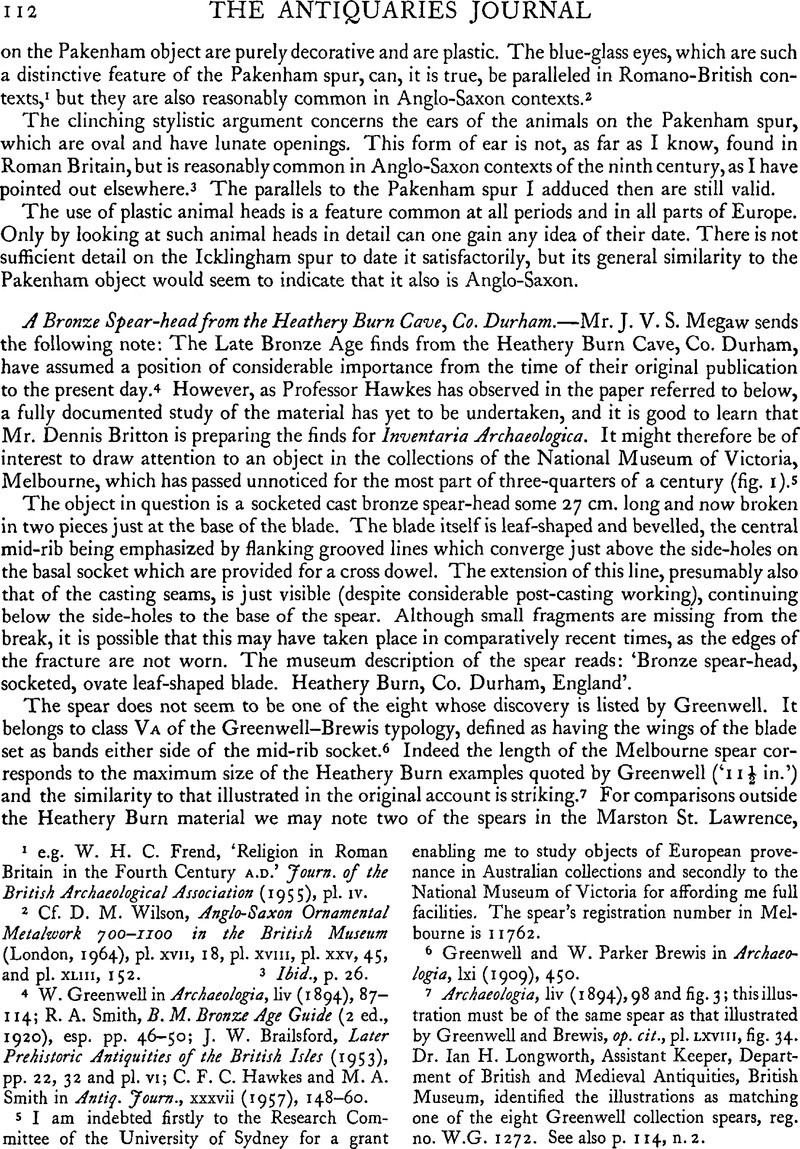Published online by Cambridge University Press: 29 November 2011

page 112 note 4 Greenwell, W. in Archaeologia, liv (1894), 87–114CrossRefGoogle Scholar; Smith, R. A., B. M. Bronze Age Guide (2 ed., 1920), esp. pp. 46–50Google Scholar; Brailsford, J. W., Later Prehistoric Antiquities of the British Isles (1953), pp. 22Google Scholar, 32 and pl. vi; Hawkes, C. F. C. and Smith, M. A. in Antiq. Journ., xxxvii (1957), 148–60Google Scholar.
page 112 note 5 I am indebted firstly to the Research Committee of the University of Sydney for a grant enabling me to study objects of European provenance in Australian collections and secondly to the National Museum of Victoria for affording me full facilities. The spear's registration number in Melbourne is 11762.
page 112 note 6 Greenwell, and Brewis, W. Parker in Archaeologia, lxi (1909), 450Google Scholar.
page 112 note 7 Archaeologia, liv (1894), 98Google Scholar and fig. 3; this illustration must be of the same spear as that illustrated by Greenwell and Brewis, op. cit., pl. lxviii, fig. 34. Dr. Ian H. Longworth, Assistant Keeper, Department of British and Medieval Antiquities, British Museum, identified the illustrations as matching one of the eight Greenwell collection spears, reg. no. W.G. 1272. See also p. 114, n. 2.
page 113 note 1 Inventaria Archaeologica, 2nd set (1953), GB 12, nos. 3–4.
page 113 note 2 Coles, J. M. in Antiquity, xxxv (1961), 63–64CrossRefGoogle Scholar for a summary; for his L.B.A. chronology see also Hawkes in (ed.) Foster, I. LI. and Alcock, Leslie, Culture and Environment (1963), pp. 239–40Google Scholar.
page 114 note 1 Inventaria Archaeologica, 4th set (1957), GB 23; the spears are nos. 2–3.
page 114 note 2 The Greenwell collection still contains eight spear-heads, reg. nos. W.G. 1272–8 and 1911.10–21.7; a ninth, ‘? Heathery Burn’, reg. no. 1875. 4–1.37 preceded the acquisition of the main collection, and together with the Melbourne spear, with which it is closely associated typologically, may be assumed to have come from a separate source (q.v. pl. xliv).